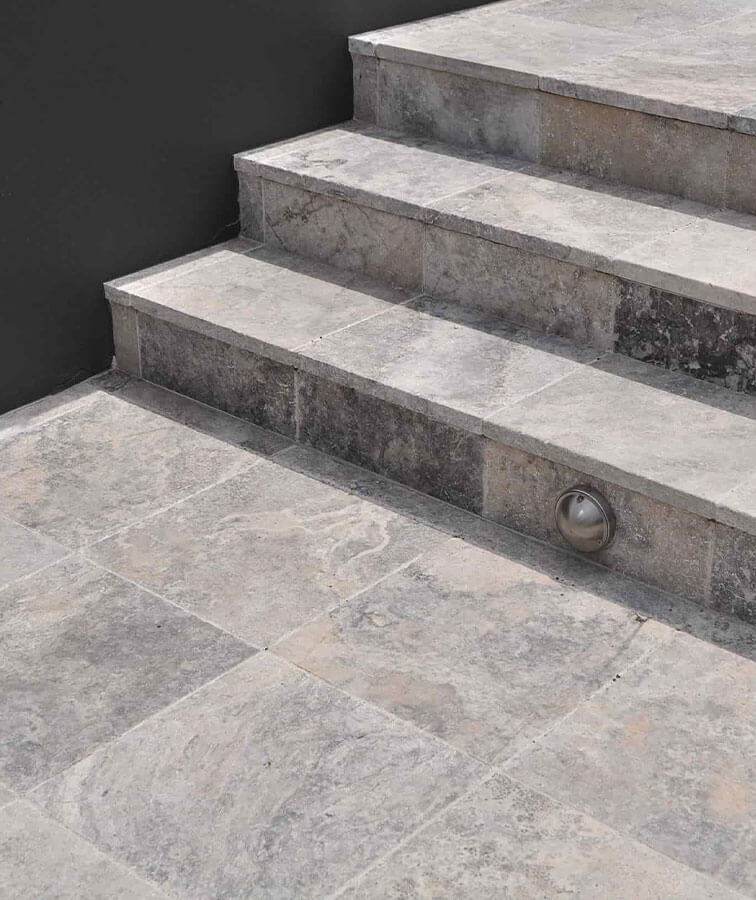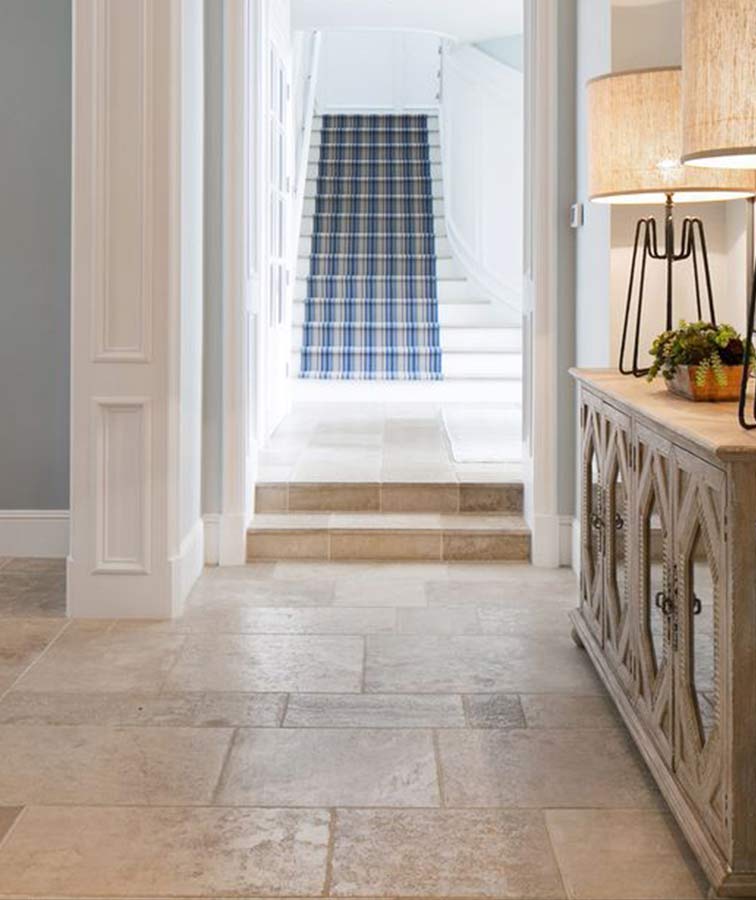Grouting Travertine
To understand and explore Grouting Travertine, you need to know first what Travertine is.
What is Travertine?
Travertine tiles are a popular choice for flooring. Because they are one of the most robust stone floor tiles on the market, and with its relaxed paint shades, Travertine’s rough-haired look brings depth. Travertine also brings a striking appeal to every floor area.

What is Grout and is it necessary to Grout your Travertine Tiles?
Grout is a mixture that is used to cover the joints between two tiles/pavers. It is important to grout your travertine tiles and/pavers especially when they are unfilled and tumbled. With travertine tiles there are size variance tolerances, especially when each tile is not the exact same size. The width of the grout joint is determined by how much the tile dimension varies. Due to the nature of these travertine pavers we normally recommend to butt joint them. Meaning they are touching as the edges are tumbled and have a rolled edge. When grouted the grout fills and it becomes approximately a 3mm joint. Overall, grouting travertine is highly recommended as it fills up the holes.
Benefits of Grouting Travertine Tile:
- Help prevents structural damage.
- A clean finished appearance
- Help stabilize the stone
- Help keep it clean
How to Grout Travertine Tiles?

Step 1: Fill bucket with water and use the sponge to scrub the Travertine. Dampen the sponge and drag it over the travertine surface for cleaning. Enable the Travertine to dry for at least 24 hours before grouting and sealing.
Step 2: Cover the top of the Travertine with a coating of a natural stone sealer.
Step 3: Mix the Grout according to the manufacturer’s guidance or use a pre-mixed matching grout
Step 4: Use the grout float to drive the grout through the joints between the travertine parts. Make sure you grout over the entire tile and into the holes as well as the joints.
Step 5: Leave the grout to be mounted in the joints for at least 15 to 20 minutes before cleaning.
Step 6: Wash the entire surface of the travertine site using a sponge and a bucket of water. And then substitute the collected water with fresh water.
Step 7: Enable the coat to dry for at least 24 hours and add the final coat of sealer as instructed by the manufacturer.
Types of Grout
There are three different types of Grout. All these types are discussed below.
- Sanded Grout
Sanded Grout contains massive sand particles. Sanded Grout is usually recommended where the grout seams are 1/8 inch deep or broader.
Some caution is required if sanded grouts are used on highly polished tiles. Because sand will scrape the surfaces, it is smart to measure the Grout on the sample tile.
- Un-sanded Grout
Un-sanded grouts have a much more pleasing appearance. They are used for grout seams 1/16 to 1/8 inch deep. When used for larger seams, non-sanded grooves appear to break because they lack sanded grouts’ binding force.
Conclusion
Grout consists of sand and cement along with other materials. Each project needs a particular form of Grout, so choose carefully. Grouting makes it easy to clean and maintain. You can’t go wrong with grouting your travertine tiles and pavers. Check out the huge range of travertine products here.
![]()
Have any questions about travertine pavers?
Give our friendly Stone Experts a call: (03) 9706 9767
After hours, please contact us here.



